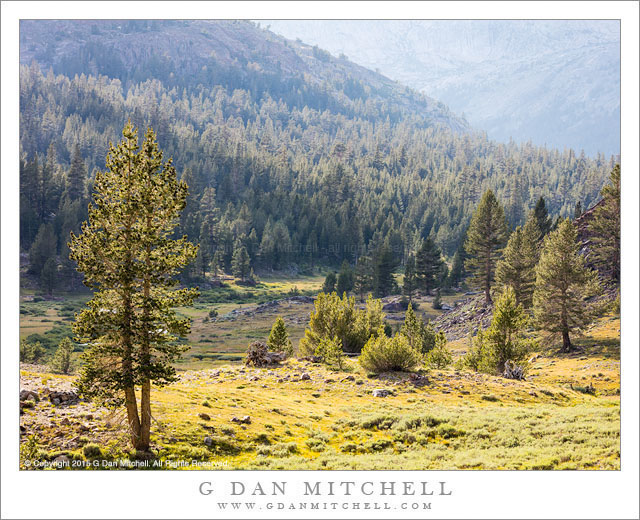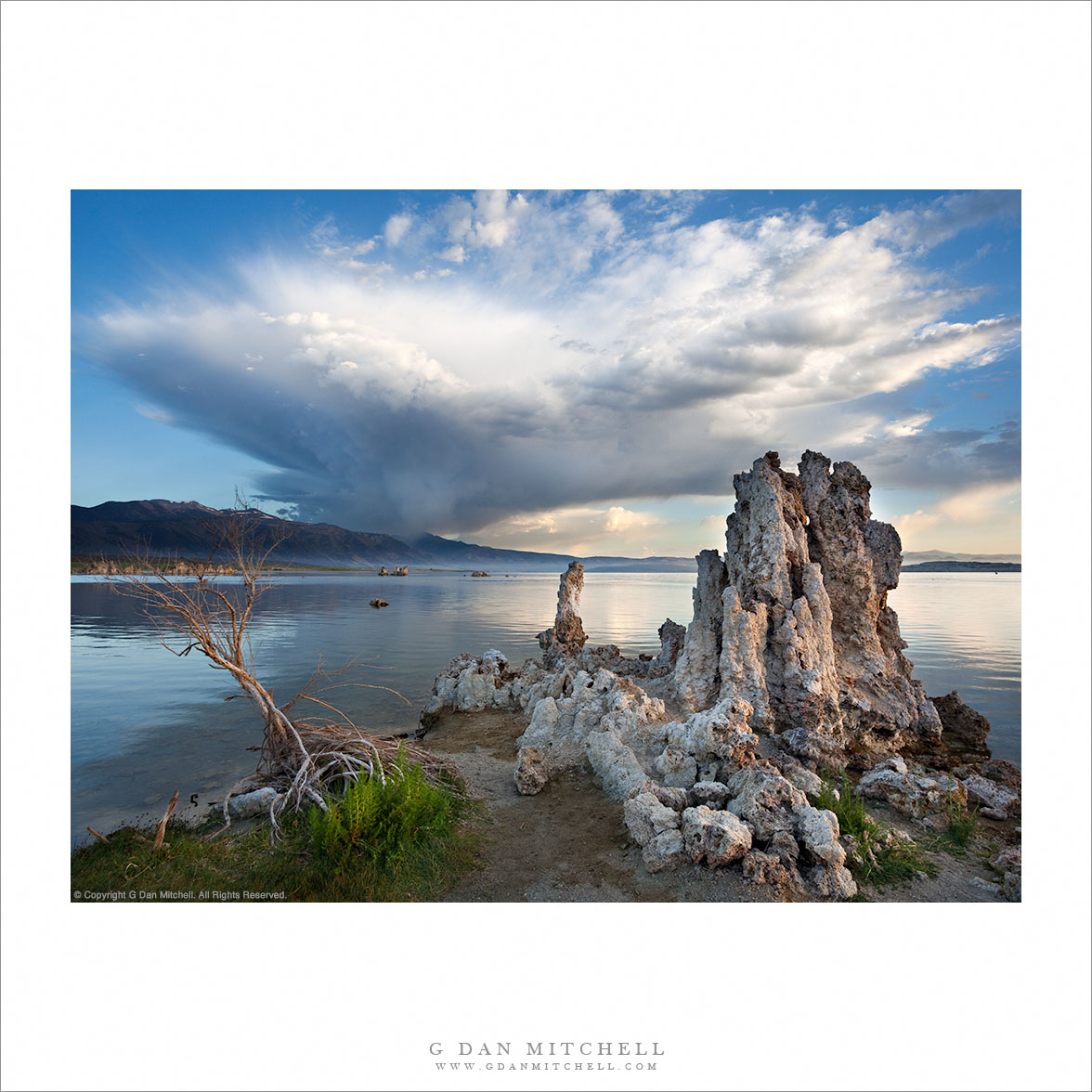
Eastern Sierra Valley, Afternoon Light. Sierra Nevada, California. July 17, 2015. © Copyright 2015 G Dan Mitchell – all rights reserved.
Afternoon light coming over the Sierra crest illuminates a subalpine eastern Sierra valley
This little spot is not far from the boundary of Yosemite. It is a place that people often stop, but from what I’ve seen they usually stop for reasons other than the view. (Recently I was there very early in the morning, and I found a bunch of impromptu campers there — probably folks who weren’t able to get a campsite inside the park.) Some years ago I “discovered” a couple of views from the spot that I’ve come to enjoy and return to — one looking towards a nearby tall peak from an angle different from the more familiar views, and the other looking westward up this high valley with meadows along the creek, forest leading up the lower slopes, and high and rocky terrain above.
This time I was there in the afternoon, and on a very hazy day. (This has been the Year of Haze in the Sierra, largely due to the dry condition and the consequent early and widespread wildfires.) I love haze, and in many ways I prefer hazy conditions over crystal clear air. so my first thoughts were of how I could use this hazy atmosphere in my photograph. As I stood at this spot with my tripod set up, clouds traversed the Sierra summit, sending shadows across the valley — alternately putting everything in shade and then revealing features and the light crept back across the landscape. So I began to watch the clouds and the approaching beams of light, trying to predict when I might see an ideal combination of the two. At the moment I made this exposure most of the scene was in sun, though a few shadows added relief to the darker areas of the forest across the valley.
 G Dan Mitchell is a California photographer and visual opportunist. His book, “California’s Fall Color: A Photographer’s Guide to Autumn in the Sierra” is available from Heyday Books and Amazon.
G Dan Mitchell is a California photographer and visual opportunist. His book, “California’s Fall Color: A Photographer’s Guide to Autumn in the Sierra” is available from Heyday Books and Amazon.
Blog | About | Flickr | Twitter | Facebook | Google+ | 500px.com | LinkedIn | Email
All media © Copyright G Dan Mitchell and others as indicated. Any use requires advance permission from G Dan Mitchell.

